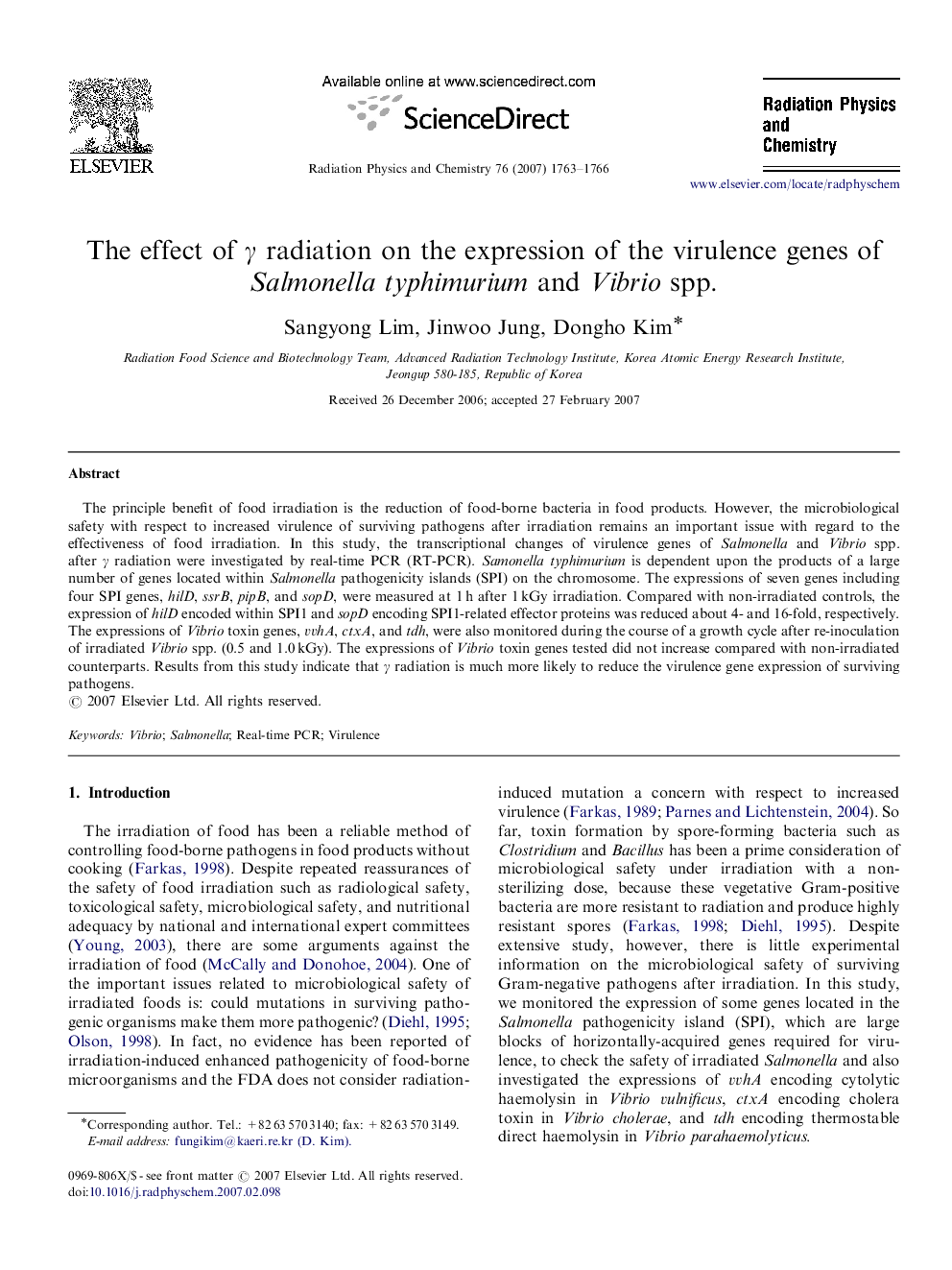| Article ID | Journal | Published Year | Pages | File Type |
|---|---|---|---|---|
| 1884633 | Radiation Physics and Chemistry | 2007 | 4 Pages |
The principle benefit of food irradiation is the reduction of food-borne bacteria in food products. However, the microbiological safety with respect to increased virulence of surviving pathogens after irradiation remains an important issue with regard to the effectiveness of food irradiation. In this study, the transcriptional changes of virulence genes of Salmonella and Vibrio spp. after γ radiation were investigated by real-time PCR (RT-PCR). Samonella typhimurium is dependent upon the products of a large number of genes located within Salmonella pathogenicity islands (SPI) on the chromosome. The expressions of seven genes including four SPI genes, hilD, ssrB, pipB, and sopD, were measured at 1 h after 1 kGy irradiation. Compared with non-irradiated controls, the expression of hilD encoded within SPI1 and sopD encoding SPI1-related effector proteins was reduced about 4- and 16-fold, respectively. The expressions of Vibrio toxin genes, vvhA, ctxA, and tdh, were also monitored during the course of a growth cycle after re-inoculation of irradiated Vibrio spp. (0.5 and 1.0 kGy). The expressions of Vibrio toxin genes tested did not increase compared with non-irradiated counterparts. Results from this study indicate that γ radiation is much more likely to reduce the virulence gene expression of surviving pathogens.
